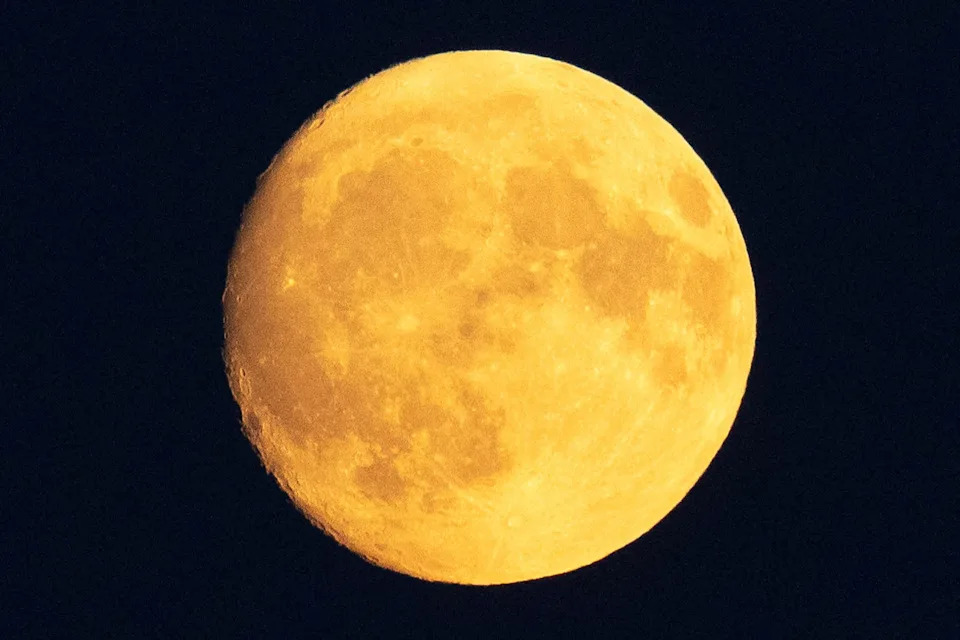When is the next full 'buck moon'? What to know about celestial events in July
There are 12 full moons in 2025, and July will bring one that's called the “Buck Moon.”
A full moon occurs — simply put — when the Earth falls between the sun and the moon, which results in the visible portion of the moon being lit by the sun.
If you’re a regular sky gazer, keeping track of celestial movements, or just curious this month, here is what you need to know about upcoming lunar activity and other planetary sightings in July.
When is the Full Buck Moon?
The next Buck Moon will arrive on Thursday, July 10, and is expected to be at peak illumination at 4:37 p.m. Eastern time, according to The Old Farmer’s Almanac.
Why is it called the Buck Moon?
Derived from Indigenous American, European and colonial American influences, moon names signify a connection to the natural world. In July, as part of a yearly renewal process, male deer grow new antlers at peak capacity after having shed the old horns at the end of the rutting season — hence lending the name Buck Moon.
Some other names for the July full moon are Thunder Moon, due to the thunderstorms, and Halfway Summer Moon. This moon is also called Berry Moon, Salmon Moon and Feather Moulting Moon.
 Nearly full moon known as the "Buck Moon" is seen above a lake near Marksewo, Poland, July 19, 2024.
Nearly full moon known as the "Buck Moon" is seen above a lake near Marksewo, Poland, July 19, 2024.How to see the Buck Moon in the Middletown area, and when will it rise?
Middletown residents and others in the mid-Hudson Valley can spot the rise of the moon above the horizon at 8:58 p.m. by looking in the southeast direction. The moon will set at 4:50 a.m., southwestward.
If you want to see surface details, you will need binoculars or a telescope. You can also use a digital camera.
More: NYSEG seeks state approval for steep rate hikes for gas, electric customers
What’s the weather forecast for Buck Moon day?
Long-range forecast by Climate Prediction Center shows normal or leaning-above-normal temperatures and precipitation levels for July 9-15.
What else can you see in the sky this July?
If you are interested in locating other planets and constellations in the sky in July, here’s what NASA recommends:
Jupiter is expected in the second half of the month in the east during the hour before dawn — positioned low in the sky, rising higher each day.
Mars is expected to appear all month in the west for a couple of hours, starting at the end of the twilight period — positioned approximately 20 degrees over the horizon line.
Mercury makes a brief appearance in the first week of July in the western skies after dusk for up to 45 minutes — positioned 10 degrees above the horizon line or lower.
Saturn will be visible all month at midnight — positioned rising high in the southern sky by sunrise.
Venus will rise all month in early morning in the east in the hours before dawn.
Aquila Constellation, the eagle-shaped cluster of stars, will appear all of July in the east in the first half of the night, anchored by its brightest star, Altair.
This article originally appeared on Times Herald-Record: When to see the Buck Moon and other July events in mid-Hudson Valley
Great explanation about the 'buck moon' event in July! Eager to learn more about upcoming astronomical phenomena that will light up our skies and teach us something new. Keep those celestial insights coming, please?
The article on the next full 'buck moon' and celestial events in July provides a valuable guideline for skywatchers, reminding us that nature’s cycles intertwine with our schedules to create moments of wonder.
An engaging read about the upcoming 'buck moon' in July, providing valuable insights into its astronomical significance and celebration timelines for those eager to connect with nature during this cosmic event. Well-curated information on celestial events enhances our appreciation of universe.
Fascinating read! Leading off with the inquiring mind's quest for when we can expect July’s transfixing Full ‘Buck Moon’, it offers a compelling insight into celestial events shaping our planetary enthusiasm this month.
The 'buck moon,' an anticipated celestial event for July, holds a significant place in nature-lovers' calendars. It symbolizes prosperity and rejuvenation – making it one to mark on any astronomical enthusiast’s radar without question.














